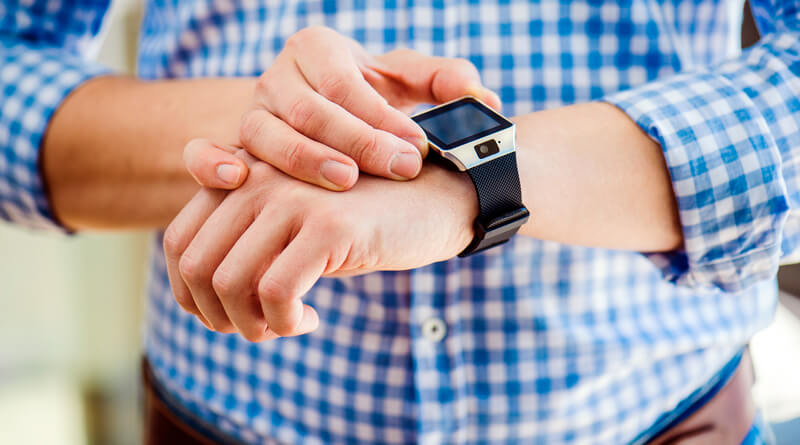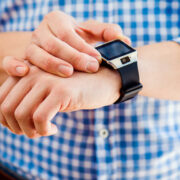Is Your Wearable Health Device A Risk to Your Privacy?

The following guest post on wearables and patient privacy was submitted by Joseph Mack.
It seems every time you turn around these days someone is staring at their wrist to check their vitals on their smartwatch or wearable health device. You see them at the gym, on the local hiking trails, and you see them on your coworkers at work. They’re popular items and that’s because more people are recognizing the benefits of a focus on a healthy lifestyle and these devices can help you take it to the next level. That’s not to say they don’t raise any concerns and we’re going to take a look at why you should be exercising a little caution when you wear one.

Should patients be concerned about their privacy when using connected health devices?
The Benefits of Wearables
Information is power so having access to real-time health data can be of significant benefit to you. There’s no point in being an ostrich with your head in the sand. If you have things you need to improve in your life why not get out in front of the problem? A wearable health device can help you do this.
Wearable health devices can track your heart rate, measure your activity levels, and monitor your sleep patterns. All of these things are vital to good health and understanding patterns can help to identify problems early so that you can make adjustments in your life that can improve your health.
Before the advent of wearable health devices, we tended to rely on our healthcare providers heavily to monitor our health and identify any potential concerns. The problem with this system was that we usually didn’t find out about health concerns before we were already at risk. The data our wearable devices collect can catch issues before they become a real issue and reduce our personal stress levels.
Popular Devices and their Risks
Some of the most popular wearable health devices on the market today are those produced by Fitbit. They offer various devices at different price points and they are generally benign with the information simply being shared to an app. In fact, you can share your data over a Wi-Fi connection without ever having to connect with the internet. You have a lot of control over what data you actually share and while any information stored on your smartphone is potentially at risk the risk is minimal in this case.
For devices such as the Zephyr Anywhere BioPatch things are not so black and white. This device can measure a whole host of biometric information which can be ideal for the athlete looking to improve their performance, but all of that information is shared to a remote device or app and that information is vulnerable. The determined hacker can easily access a lot of sensitive health information that could be used against you by health insurance providers and potential or existing employers.
Who Has Access to Your Data?
When you share any information to your smartphone from your wearable health device that information can potentially be accessed by the company that manufacturers your device and your phone company. This is of particular concern if you’re using various cloud services that these devices offer. Those cloud services may be convenient, but any time you use one you’re exposing yourself to a certain level of risk.
It’s a good idea to read your end-user license agreement (EULA) carefully. There may be a clause in there that allows them to share your data with third parties without your knowledge or consent. It’s always a good idea to know and understand your rights. While the clauses in your EULA may seem relatively benign you should always do your homework. If you can have a look at the EULA of a device before you buy it even better!
A report by the American University and the Center for Digital Democracy found that the fragmented healthcare sector currently fails to protect the private information collected by health wearables. Many of this information has been collected by Big Data and has the potential to offer many benefits as more data can help optimize treatments. However, there can be scary repercussions of sharing this information without proper regulations.
How Could Your Own Data Be Used Against You?
We’ve already touched upon it briefly, but it bears repeating – be very cautious when using any type of cloud service associated with a device. As surprising as it may seem, the security of information is a bit of an afterthought when it comes to wearable devices. When you use one you’re gathering a lot of information about yourself that could easily become a public record. There are cases where company health insurance providers have denied coverage to employees because of data collected on their own devices. It may be best to keep the data you’re collecting to yourself.
The other thing to keep in mind is that when you share your data online it may be stored in multiple locations over time. These different layers of data can be hard to track and even when you think you’ve deleted information that you’ve shared online there’s a good chance it can still be accessed. With some devices, it’s not easy to delete any data that’s been saved – if it’s possible at all. It’s always best to understand what you’re getting yourself into before you commit to anything.
Some Things You Can Do to Protect Yourself
Now that we’ve discussed some of the potential dangers of wearable health devices it’s time to take a step back and look at the positive sides. These devices can help you improve your approach to your overall health by keeping you focused and informed. The key is to understand the privacy issues associated with any device before you purchase one and try to select a device that provides you with the most control over your information.
If you have to spend a bit more for a more secure device wait until you can afford it and opt for the more secure device. If there is firmware that can be updated make sure it’s up to date as security patches can be vital to securing your information. Owning a wearable health device can be a great thing as long as you understand how to use it while protecting your information at the same time.
This is a guest post by Joseph Mack from smarthomeSAGE, a tech blog that analyzes the impact that smart home technology (such as video doorbells on home life).


